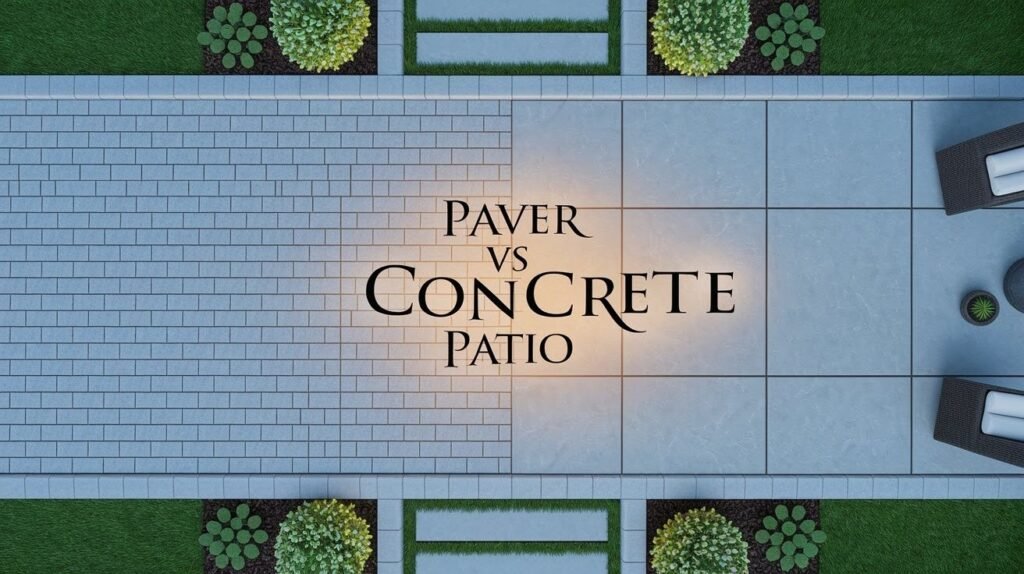Your patio material choice affects both your outdoor space’s look and your wallet for years to come. The wrong selection can lead to costly repairs, safety issues, and disappointment with how your backyard turns out.
Pavers and concrete are the two most popular options, but they offer very different benefits. Concrete provides a smooth, uniform surface at a lower upfront cost. Pavers give you design flexibility and easier repairs but require a bigger initial investment.
This guide breaks down everything you need to know about both materials. We’ll cover costs, installation requirements, maintenance needs, and long-term durability. You’ll also learn which option works best for different climates, soil types, and design goals.
By the end, you’ll know exactly which material fits your project and budget.
Understanding Your Options
What Are Paver Patios?
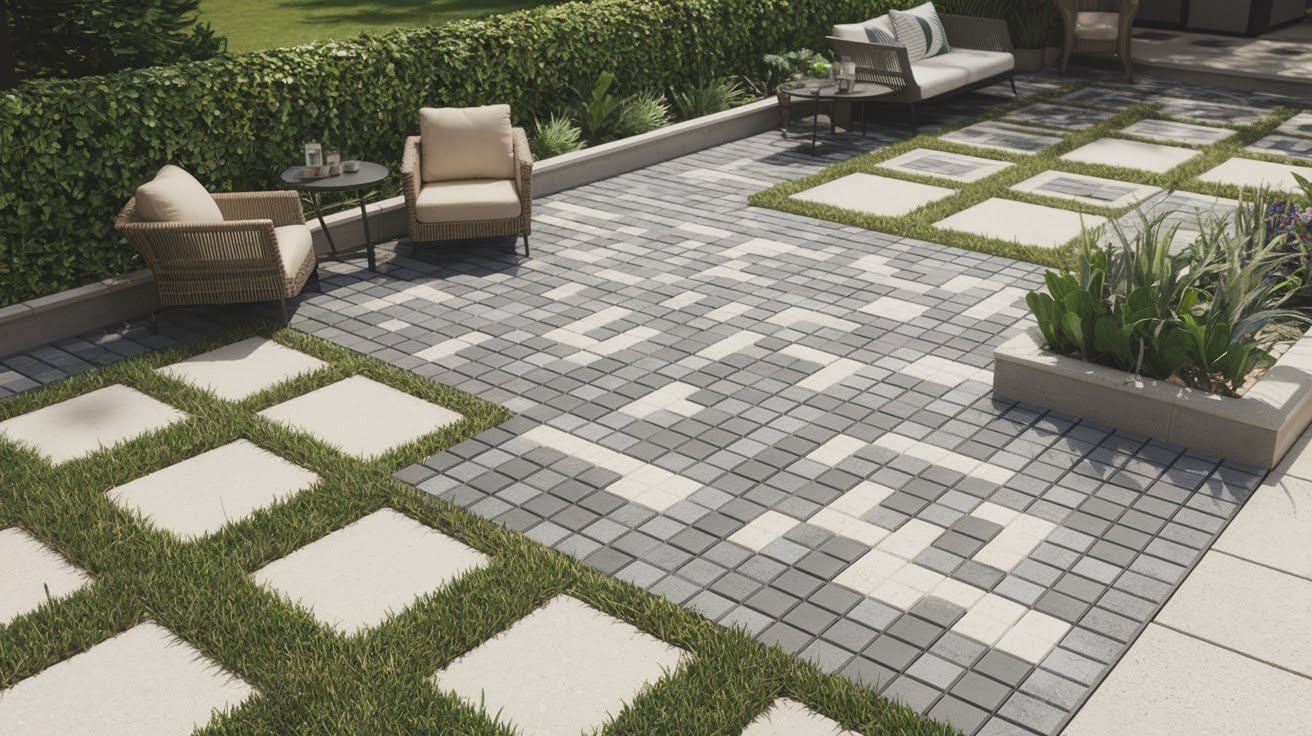
Pavers are individual pieces that fit together like puzzle pieces to create your patio surface. They come in three main materials: concrete pavers, natural stone, and brick. Each type offers different colors, textures, and price points.
The interlocking design gives you incredible style flexibility. You can create patterns, mix colors, or add borders for a custom look. Pavers work well for patios, walkways, driveways, and pool decks because they handle different weather conditions and ground movement better than solid surfaces.
The individual pieces also make repairs easier. If one paver cracks or stains, you can replace just that piece without redoing the entire area.
What Is a Concrete Patio?
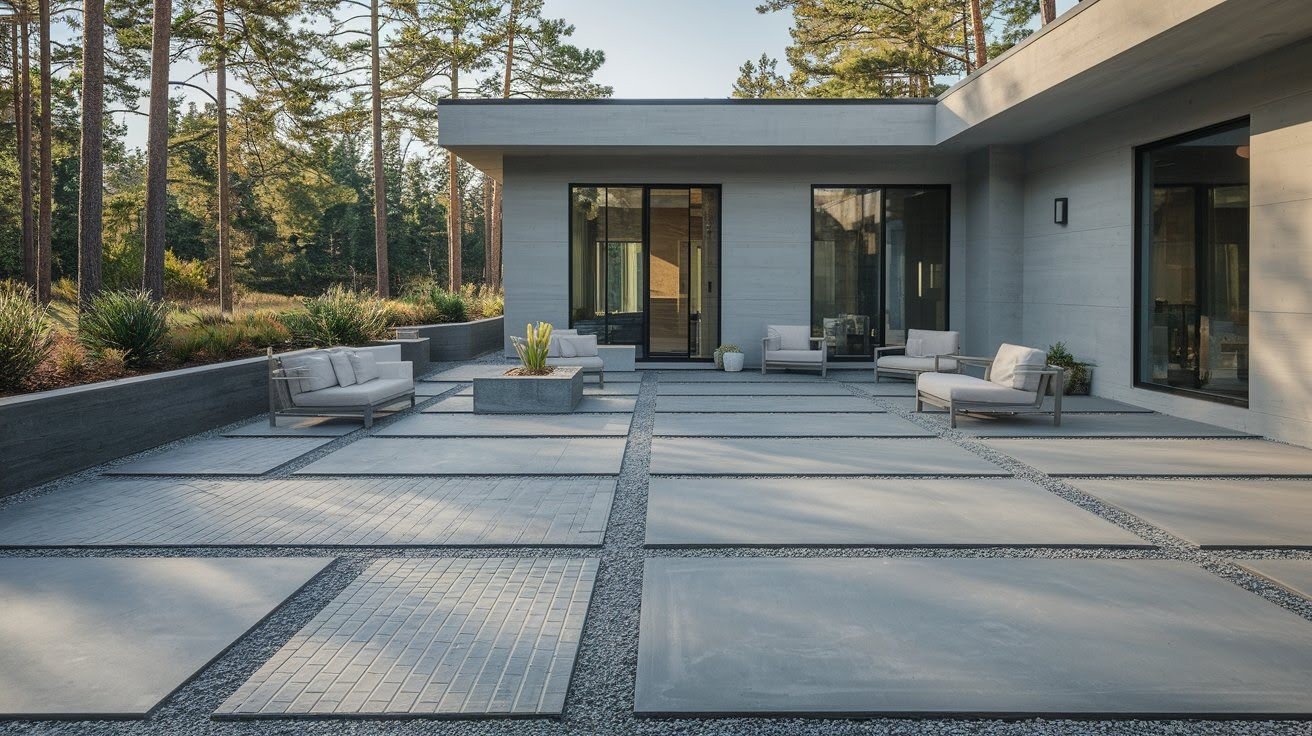
A concrete patio is a solid, poured surface that creates one continuous slab. You have several options: standard gray concrete, stamped concrete that mimics other materials, or stained concrete with custom colors.
The smooth, uniform appearance works perfectly for modern and minimalist design styles. Concrete gives you clean lines and a sleek look that complements contemporary homes and furniture.
This option works best when you want a simple, uninterrupted surface for entertaining or when your home’s architecture calls for clean, geometric lines.
Aesthetic Appeal and Design Flexibility
Pavers: Endless Style Possibilities
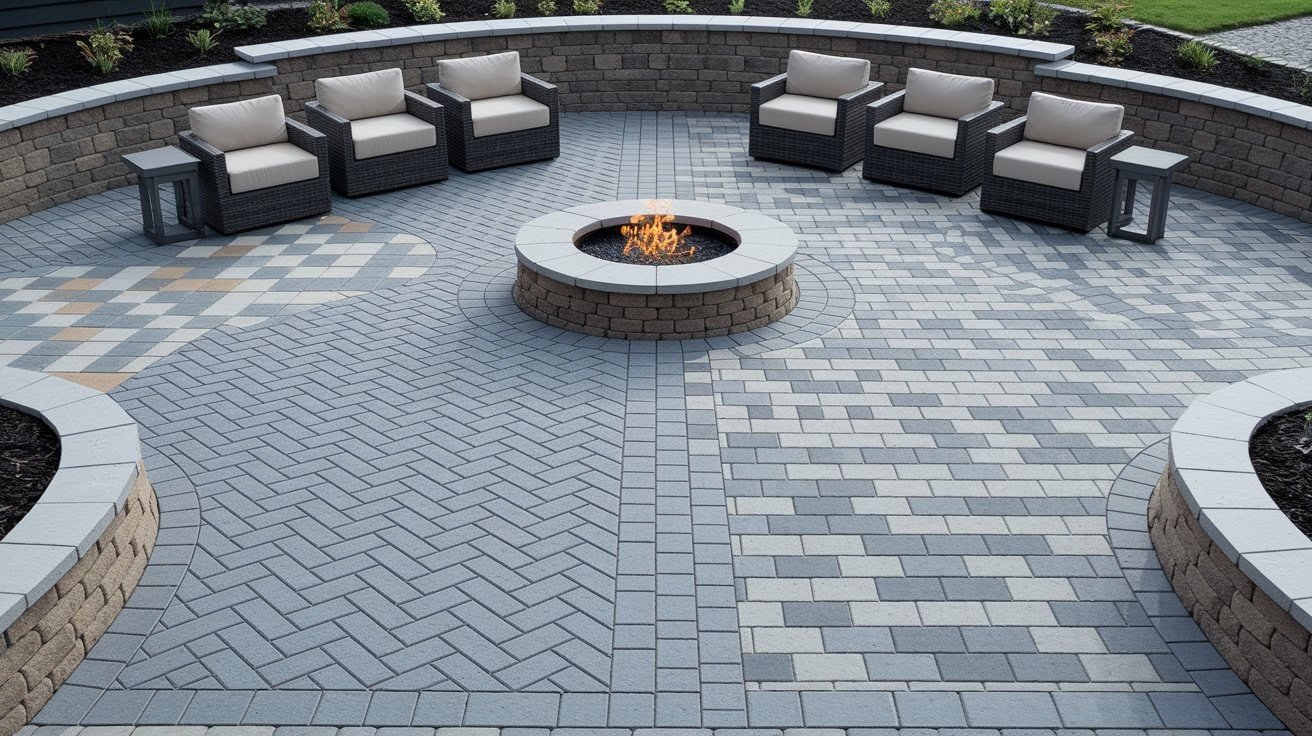
Pavers give you more design options than almost any other patio material. You can choose from dozens of colors, shapes, and textures to match your home’s style. Natural stone pavers bring rustic charm, while sleek concrete pavers feel more contemporary.
Pattern options are nearly limitless. Try herringbone for classic appeal, cobblestone for old-world charm, circular patterns for focal points, or geometric designs for modern homes. You can even mix different paver types to create borders or accents.
One major advantage is how easy it is to update your look later. Want to add a fire pit area or change your color scheme? You can replace sections without starting over completely.
Concrete: Simplicity with Limited Flair
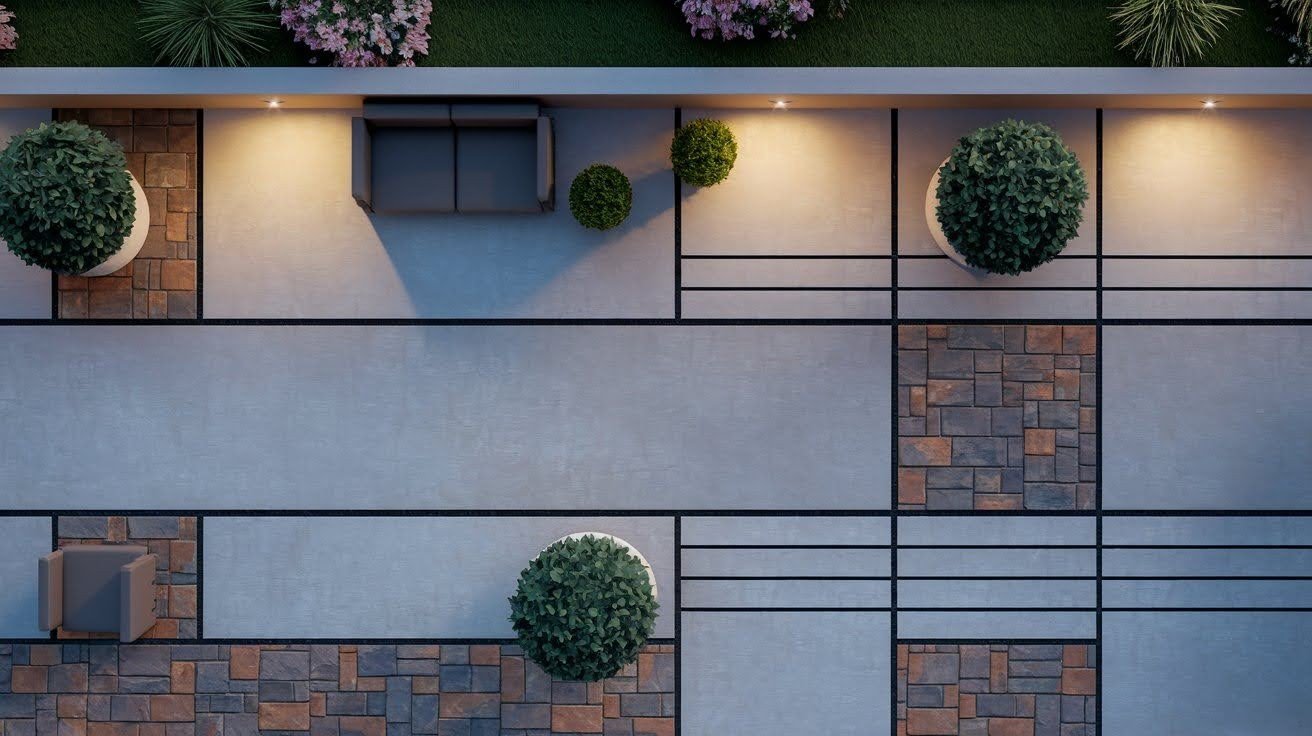
Concrete patios offer clean, simple beauty that works well with modern home designs. The smooth, uniform surface creates a minimalist backdrop that lets your furniture and plants take center stage.
You do have some decorative options to add visual interest. Stamped concrete can mimic stone or brick patterns. Stained concrete adds color in earth tones or bold hues. Scoring creates geometric lines that break up large areas.
However, these customized finishes cost significantly more than standard concrete. The fancier you go with concrete, the closer you get to paver pricing without gaining their flexibility.
Durability and Longevity
Pavers: Built for the Long Haul
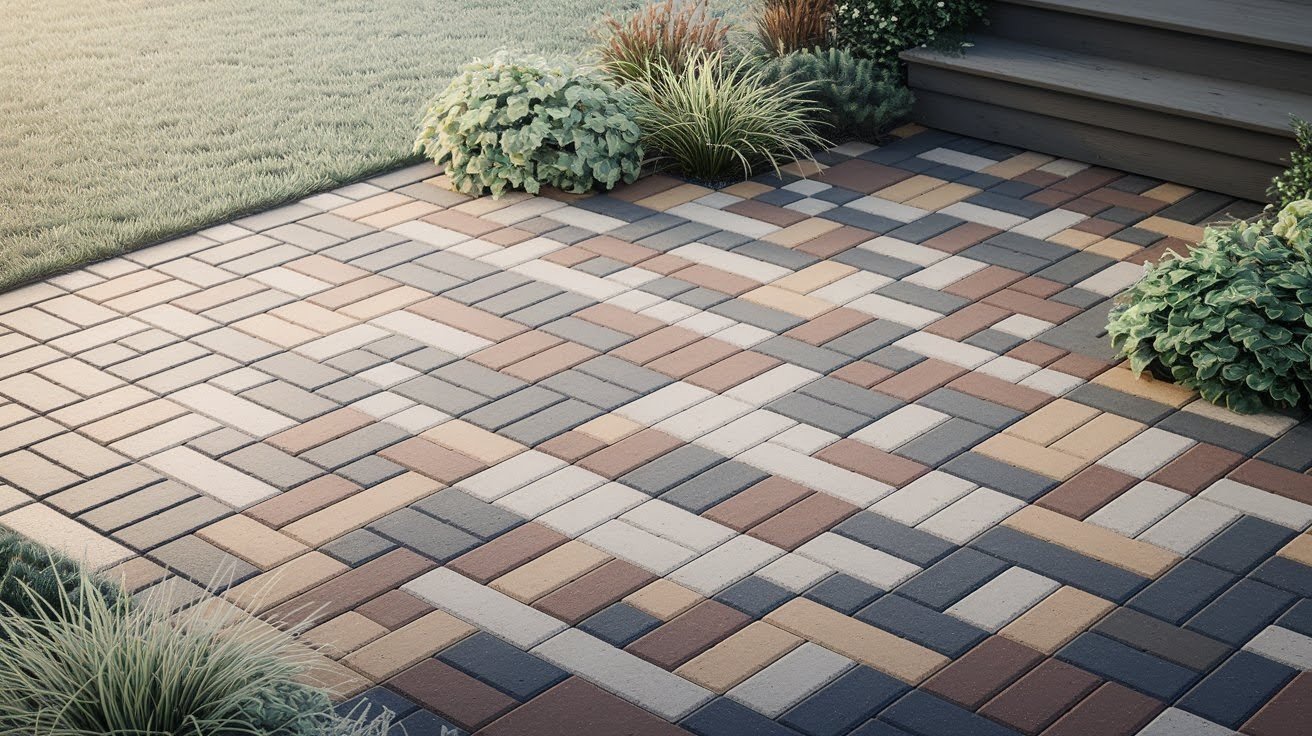
Pavers handle weather changes like champions. When ground freezes and thaws, the individual pieces can move slightly without breaking. This flexibility prevents the cracking that plagues solid surfaces in cold climates.
Temperature extremes don’t faze quality pavers. They’re perfect for regions that see harsh winters or dramatic seasonal changes. The interlocking design actually gets stronger over time as the pieces settle together.
When damage does happen, repairs are simple and affordable. Replace the affected pavers without touching the rest of your patio. This means your investment keeps paying off for decades with minimal maintenance costs.
Concrete: Strong but Vulnerable
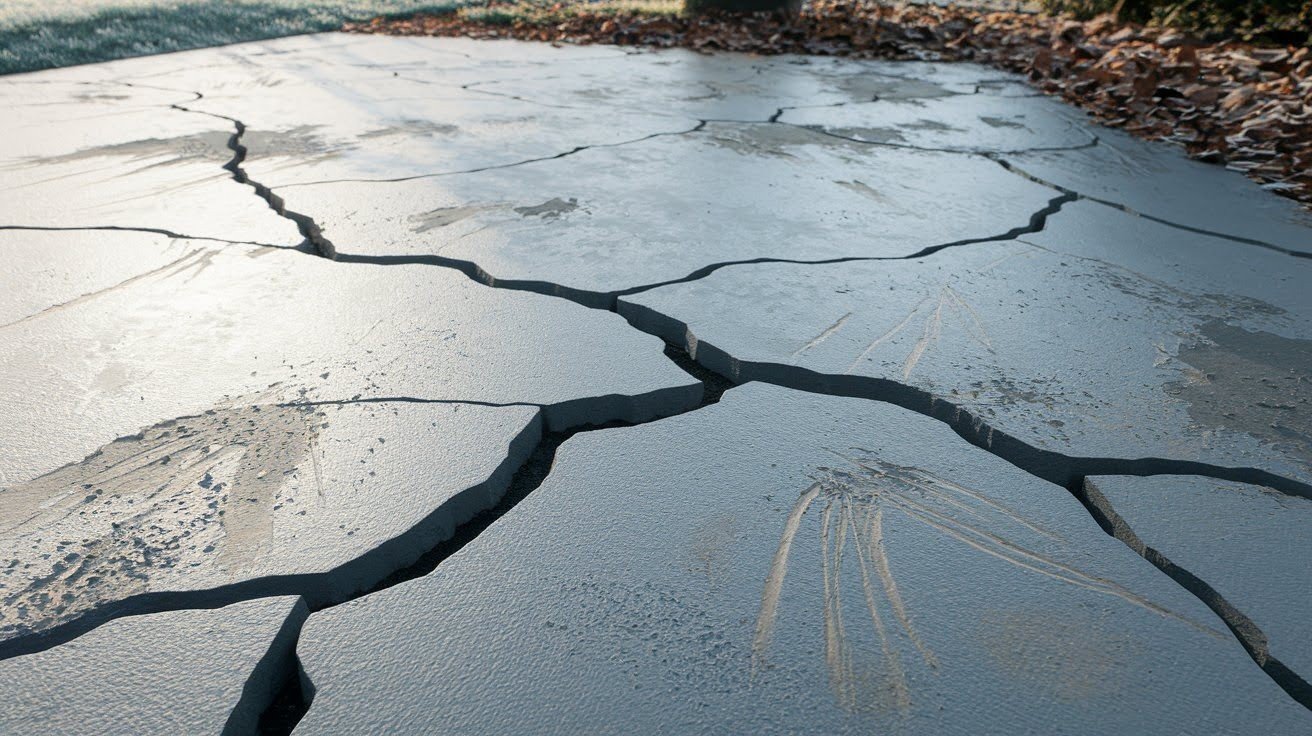
Concrete starts out incredibly strong as one solid slab. The continuous surface handles heavy loads well and provides a stable foundation for outdoor furniture and activities.
However, concrete’s strength becomes a weakness over time. When the ground shifts or freezes, the rigid slab can’t flex like pavers do. This leads to cracks that start small but grow larger each season.
Repair options are limited and often expensive. Small cracks can be patched, but they usually return. Large cracks or multiple problem areas often require tearing out sections and repouring, which rarely matches the original perfectly.
Maintenance and Repairs
Pavers: Easy to Manage
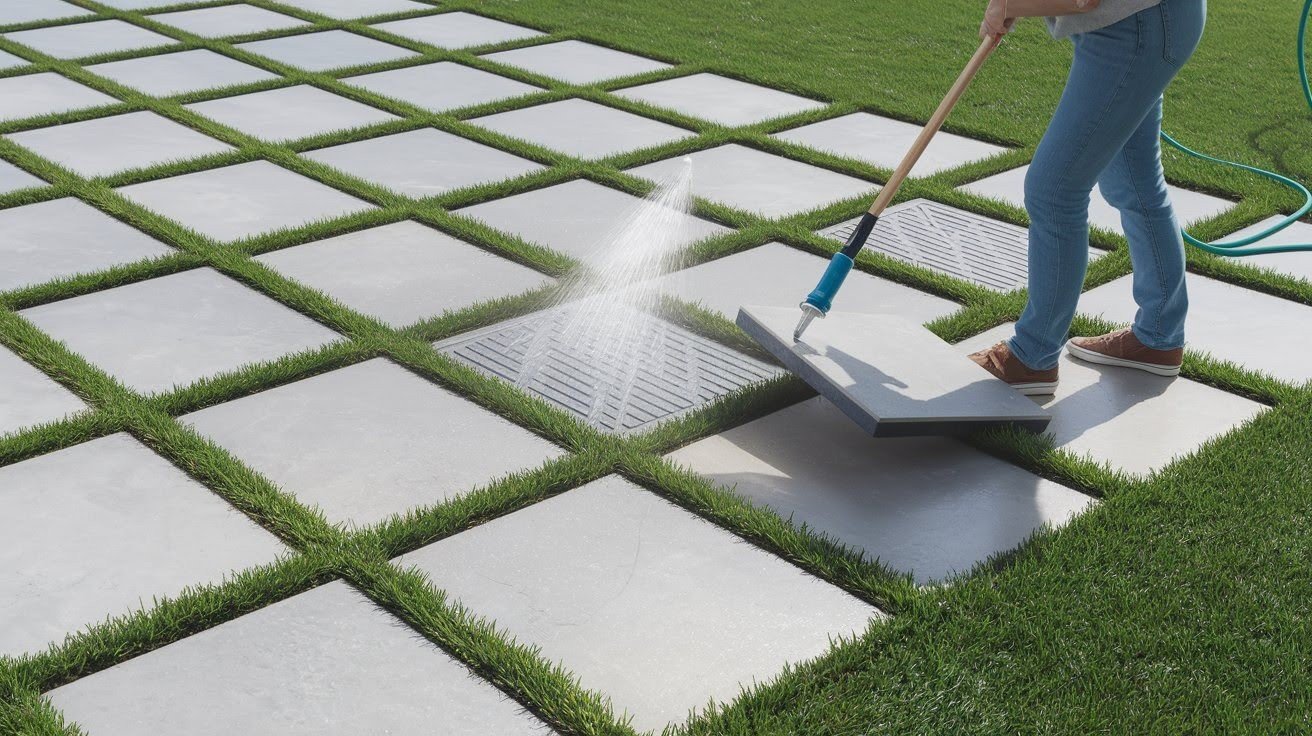
Well-installed pavers need very little ongoing maintenance. Regular sweeping and occasional hosing down keeps them looking great. The gaps between pavers actually help with drainage, preventing water buildup that can cause problems.
When issues do arise, fixes are straightforward. A single cracked or stained paver can be popped out and replaced in minutes. No special tools or professional help needed – just lift out the old one and drop in the new piece.
You might need to add fresh polymeric sand between joints every few years or apply sealer to maintain color and prevent stains. These tasks are simple weekend projects that keep your patio looking fresh.
Concrete: Minimal Upkeep, Bigger Repairs
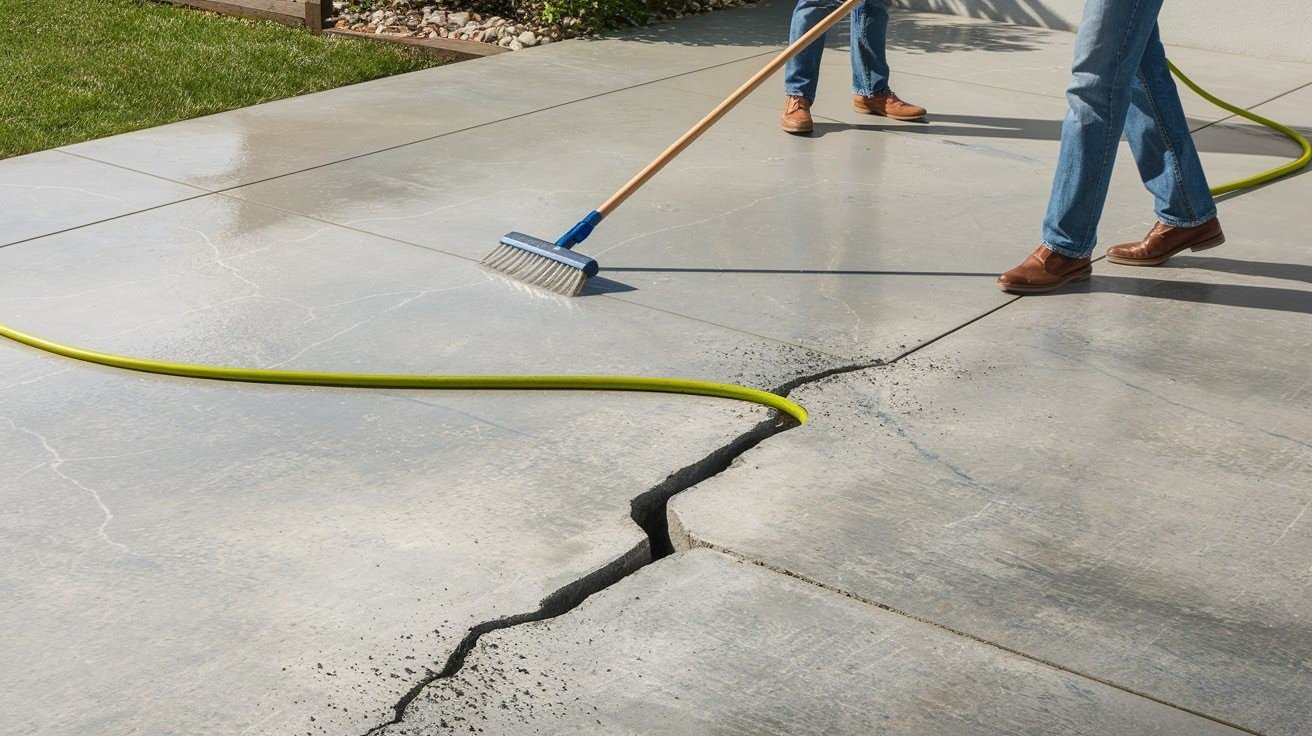
Day-to-day concrete maintenance is minimal. Sweep regularly, hose down as needed, and apply sealer every few years to prevent stains and weather damage. The smooth surface makes cleaning easy.
The challenge comes when concrete develops cracks. Small hairline cracks can be filled with concrete caulk, but they often reappear. Larger cracks require professional repair that may not match the original color or texture perfectly.
Cold climates create the biggest headaches. Freeze-thaw cycles cause concrete to crack and crumble. These repairs are expensive and disruptive, often requiring jackhammering and repouring entire sections.
Installation Process
Paver Installation
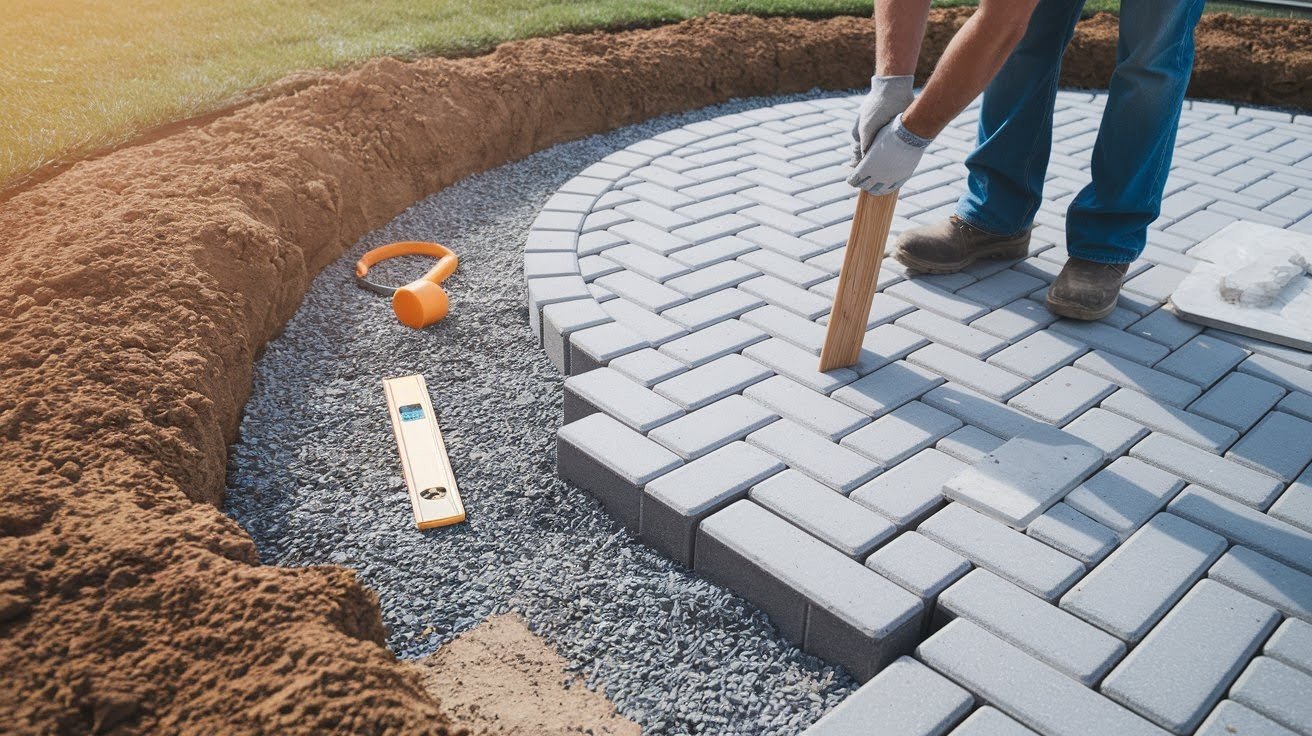
Installing pavers takes more time and effort than concrete but creates a stronger, more flexible foundation. The process starts with excavation, then building up layers of gravel and sand to create the perfect base.
Each paver gets placed individually by hand, which means the job takes longer than pouring concrete. The installer must ensure proper spacing, level surfaces, and correct patterns throughout the entire area.
This precision work requires skill and patience, but the results are worth it. The layered base and individual placement create a surface that can handle ground movement and weather changes for decades.
Concrete Installation
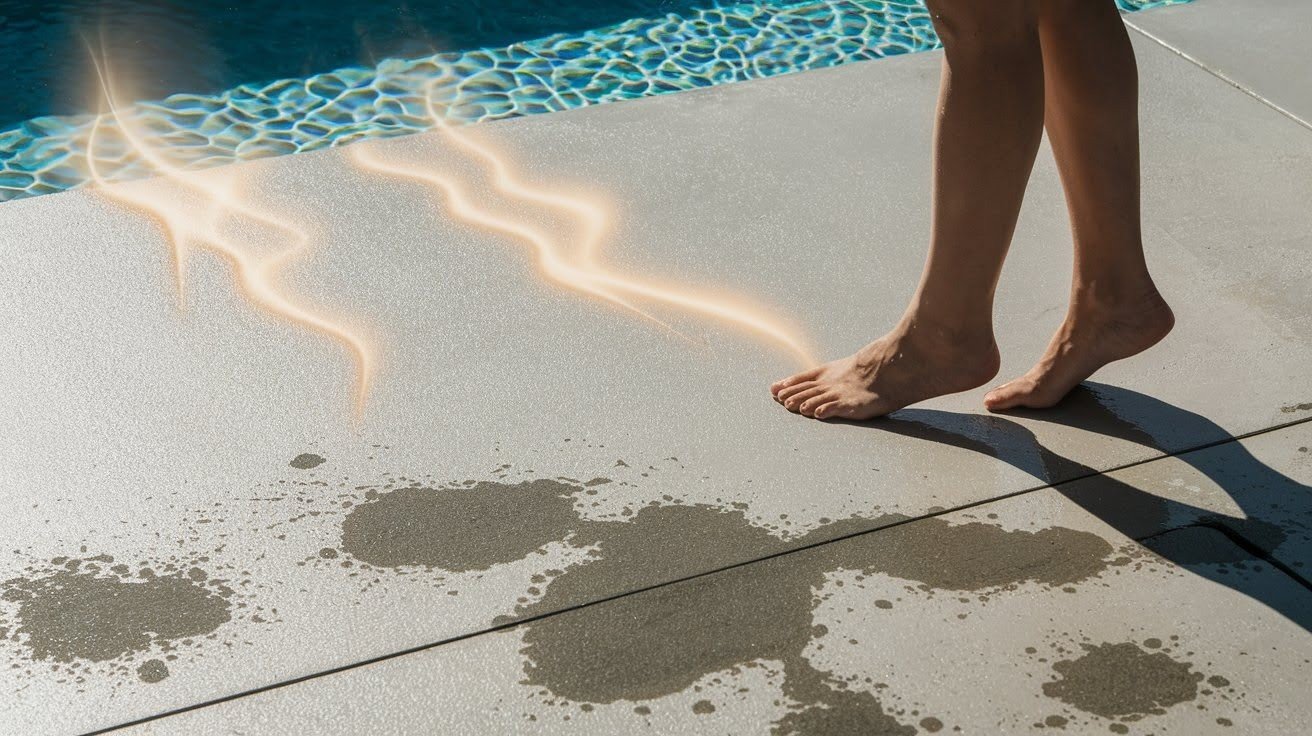
Concrete installation happens much faster than pavers. Once the area is prepped and forms are set, the concrete gets poured, leveled, and smoothed in a single day for most patio sizes.
The process is less intricate but offers limited chances to make changes once the concrete starts setting. You need to get the color, texture, and finish right the first time.
After pouring, concrete needs time to cure before you can walk on it or place furniture. This typically takes 24-48 hours for light use and up to a week for heavy items. During this time, the area must stay protected from rain and foot traffic.
Cost and Long-Term Value
Initial Costs
Pavers require a bigger upfront investment, typically running $10-30 per square foot depending on the material you choose. Basic concrete pavers start around $10, while premium natural stone can reach $30 or more per square foot.
Concrete costs significantly less initially, ranging from $4-12 per square foot. Basic gray concrete starts around $4, while decorative options like stamped or stained concrete can reach $12 per square foot.
For a typical 300-square-foot patio, you’re looking at $1,200-3,600 for concrete versus $3,000-9,000 for pavers. That’s a substantial difference that influences many homeowner decisions.
Long-Term Savings
Pavers often provide better value over time despite the higher initial cost. Easy repairs and low maintenance keep your lifetime costs down. When problems arise, you replace individual pieces rather than entire sections.
Concrete’s lower upfront cost can be deceiving. Major crack repairs, resurfacing, or replacement can cost thousands. In cold climates, freeze-thaw damage often requires expensive fixes within 10-15 years.
Property value considerations also matter. Real estate experts consistently report that quality paver patios add more resale value than concrete ones. The increased home value often offsets the higher installation cost when you sell.
Safety and Comfort
Pavers: Safer for Bare Feet
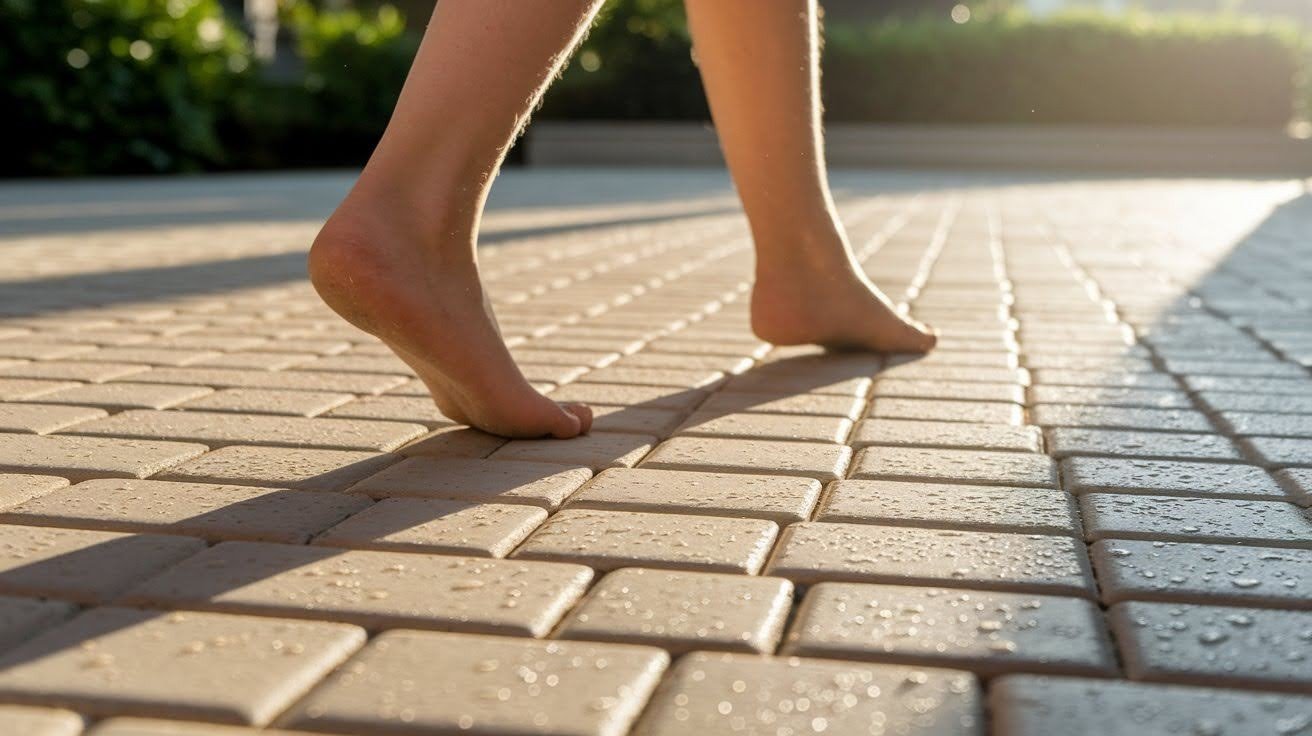
Pavers naturally provide better grip than smooth surfaces. The texture and joints between pieces create traction that helps prevent slips, even when wet. This makes them much safer for families with children or anyone who likes to walk barefoot outdoors.
Temperature control is another major advantage. Pavers stay noticeably cooler than concrete in direct sunlight, which is especially important around pools. You can comfortably walk on them without burning your feet during hot summer days.
The individual pieces also allow for better drainage. Water flows through the joints instead of pooling on the surface, reducing slip hazards after rain or pool splashing.
Concrete: Practical but Slippery
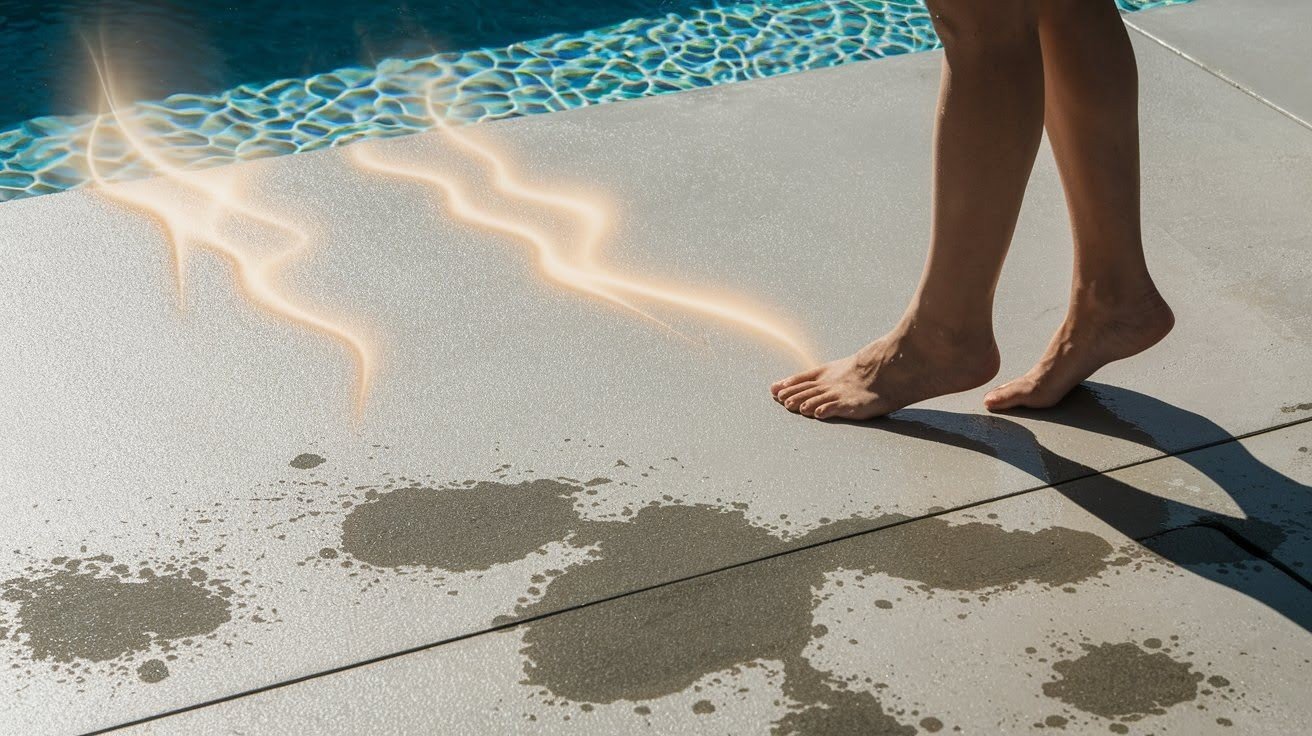
Concrete can get dangerously hot in direct sunlight, making it uncomfortable or even painful to walk on barefoot. This is particularly problematic around pools where people are naturally barefoot and wet.
The smooth surface becomes slippery when wet, creating safety concerns near pools, outdoor kitchens, or any area that gets regular water exposure. Even light moisture from morning dew can make concrete surfaces treacherous.
While you can add texture to concrete during installation to improve traction, this usually increases costs and still doesn’t match the natural slip resistance that pavers provide.
Environmental Impact
Pavers: Eco-Friendly Permeability
Pavers allow rainwater to soak through the joints and into the ground naturally. This reduces stormwater runoff that can overwhelm drainage systems and cause flooding in your neighborhood.
The permeable surface also helps combat the heat island effect that makes urban areas hotter than surrounding countryside. Water evaporating from the ground beneath pavers provides natural cooling, while the individual pieces don’t absorb and radiate heat like solid surfaces do.
This makes pavers perfect for sustainable landscaping projects. They support groundwater recharge, reduce strain on municipal storm systems, and create more comfortable outdoor temperatures during hot weather.
Concrete: Less Permeable
Solid concrete slabs create impermeable surfaces that force all rainwater to run off rather than soaking into the ground. This increases flooding risk and puts extra strain on storm drains and sewage systems.
Concrete also absorbs heat during the day and radiates it back at night, contributing to higher local temperatures. Large concrete areas can make your yard and surrounding area noticeably warmer during summer months.
While you can install permeable concrete or add drainage features, these modifications cost extra and still don’t match the natural environmental benefits that pavers provide right out of the box.
Comparison Summary: Pavers vs Concrete Patio
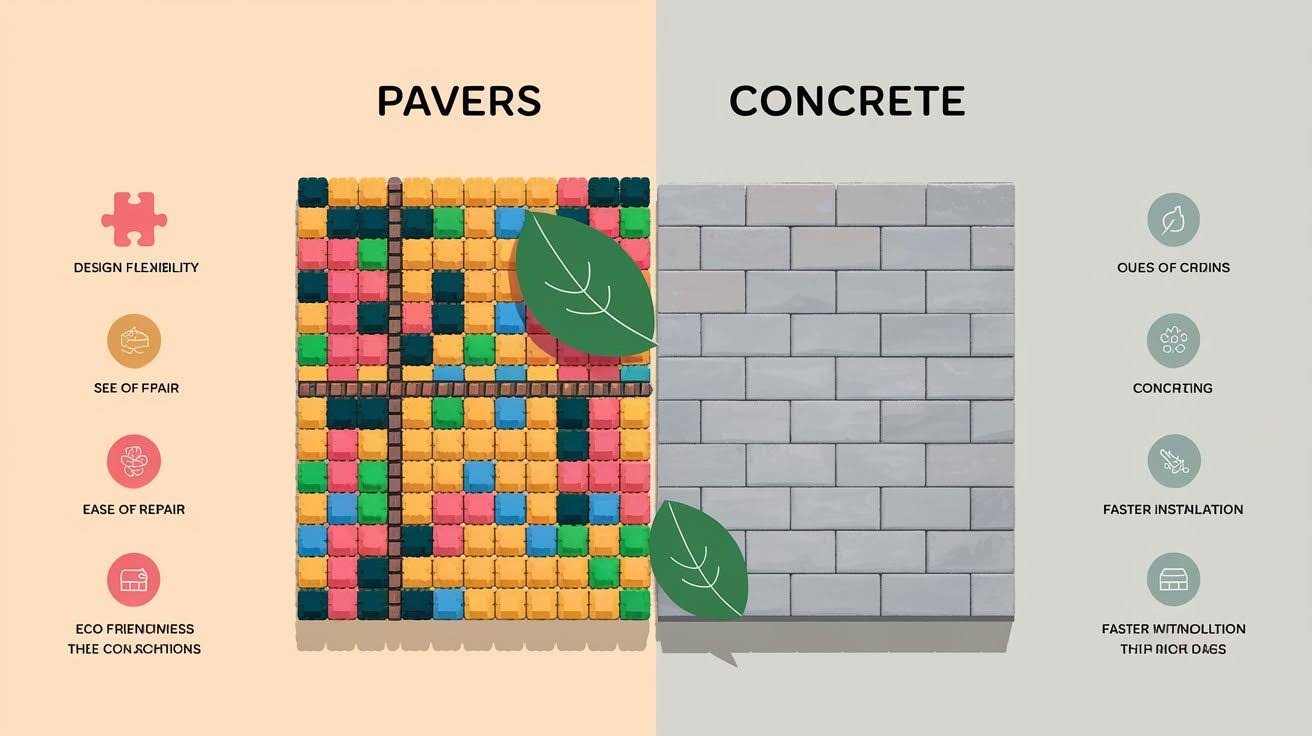
|
Feature |
Pavers |
Concrete |
|
Design Flexibility |
Wide range of styles, colors, and patterns |
Limited unless stamped or stained |
|
Durability |
Flexible, resists cracking |
Prone to cracks in temperature shifts |
|
Maintenance |
Easy to repair, replace pavers |
Costly to fix and patch |
|
Safety |
Slip-resistant, stays cooler |
Can be slippery and hot |
|
Eco-Friendly |
Permeable, reduces runoff |
Less permeable |
|
Cost |
Higher upfront, better long-term ROI |
Lower initial cost, higher maintenance |
|
Installation Time |
Longer, more complex |
Faster, easier process |
|
Resale Value |
Increases curb appeal |
Moderate visual impact |
|
Weather Resistance |
Adapts to conditions |
Cracks in harsh climates |
|
Customization |
Very high |
Limited, unless decorative |
Conclusion
Both pavers and concrete have clear advantages depending on your priorities. Pavers offer superior long-term value, design flexibility, and curb appeal. They handle climate extremes better and provide easier maintenance over time. Concrete wins on upfront costs, quick installation, and clean minimalist looks.
Your choice depends on three key factors: climate conditions, available budget, and design goals. Cold climates favor pavers due to freeze-thaw resistance. Limited budgets may require concrete initially. Modern home styles often suit concrete’s clean lines.
Consider your long-term plans too. If you’re staying in your home for years, pavers typically provide better value and satisfaction. For short-term housing or tight budgets, concrete gets the job done affordably and quickly.
Frequently Asked Questions
How long do pavers vs concrete patios typically last?
Quality pavers can last 25-50 years with proper installation and minimal maintenance. Concrete patios typically last 15-25 years before requiring major repairs or replacement, especially in freeze-thaw climates.
Can I install pavers or concrete myself as a DIY project?
Concrete is generally too complex for DIY due to timing, mixing, and finishing requirements. Paver installation is more DIY-friendly, though proper base preparation is critical for long-term success.
Which option works better around pools?
Pavers are superior for pool areas because they stay cooler, provide better slip resistance when wet, and allow water drainage. Concrete can become dangerously hot and slippery around pools.
How do repair costs compare between pavers and concrete?
Paver repairs typically cost $50-200 for replacing individual pieces. Concrete crack repairs range from $300-1,500 depending on severity, and may require professional resurfacing or replacement.
Which material adds more value to my home?
Pavers generally add more resale value due to their premium appearance and durability. Real estate professionals consistently report higher property value increases with quality paver installations compared to concrete patios.


